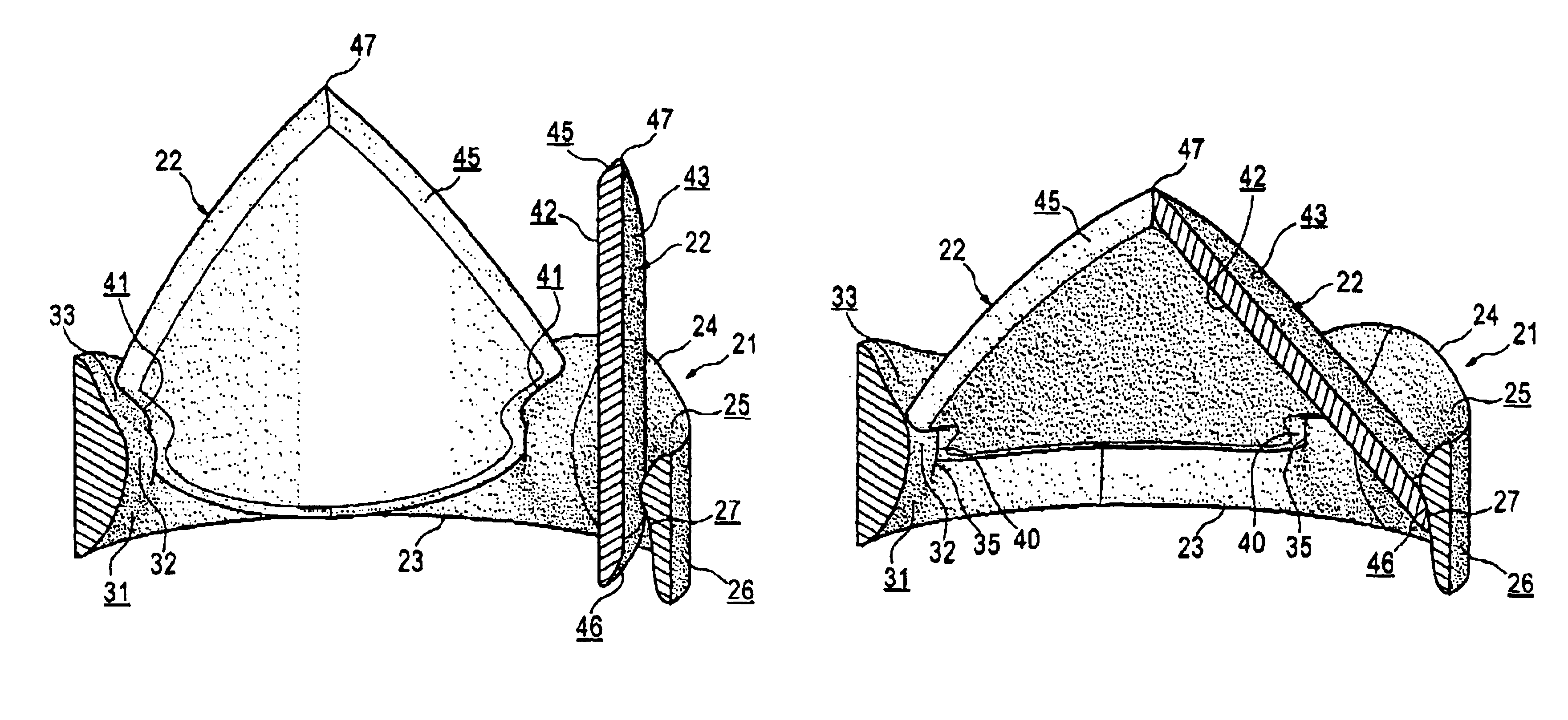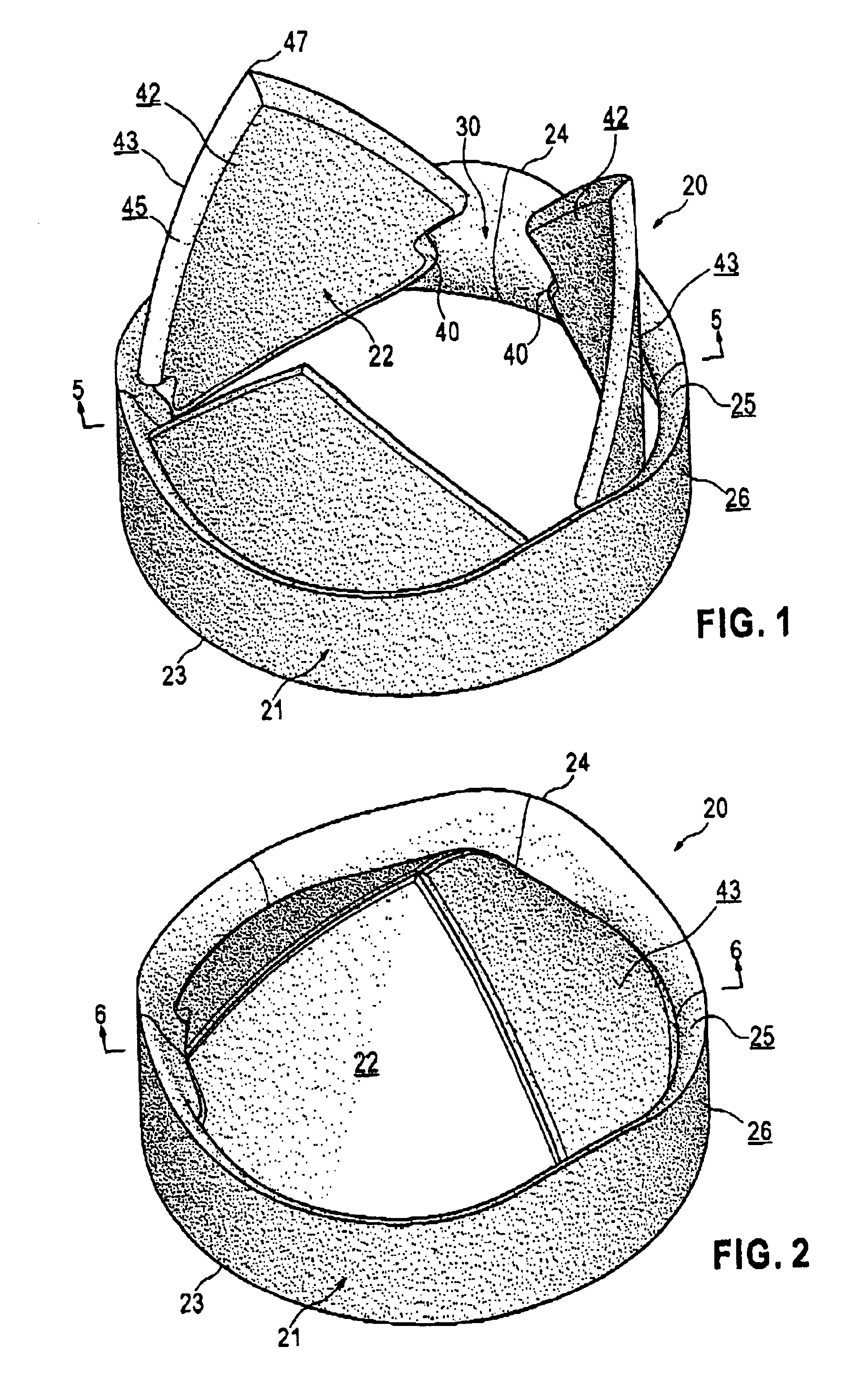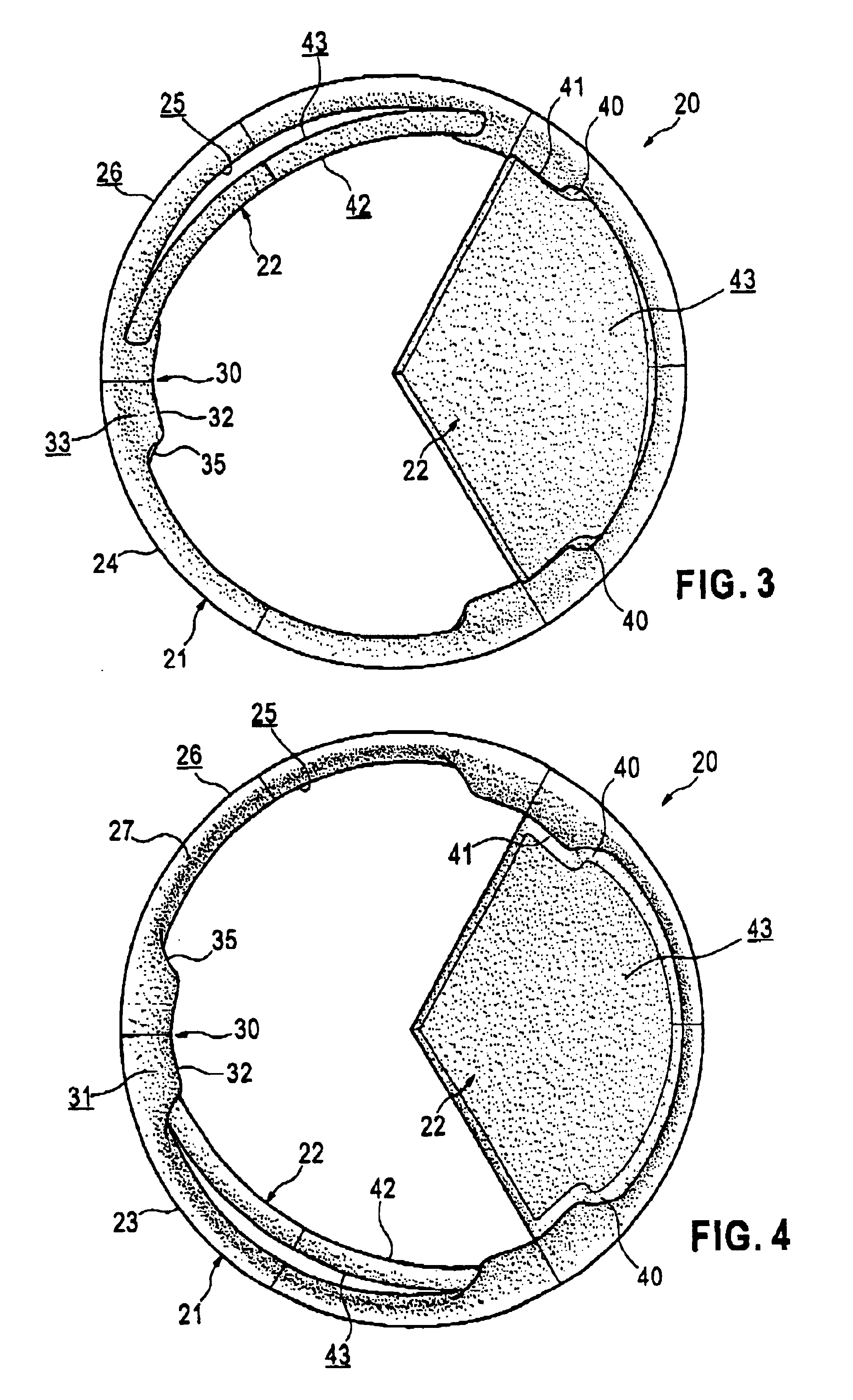Tri-leaflet mechanical heart valve
a heart valve and tri-leaflet technology, applied in the field of artificial mechanical heart valves, can solve the problems of wake and turbulence created in the blood flow through the heart valve, and achieve the effect of smooth blood flow
- Summary
- Abstract
- Description
- Claims
- Application Information
AI Technical Summary
Benefits of technology
Problems solved by technology
Method used
Image
Examples
Embodiment Construction
[0033]In reference to the drawings and in particular to FIGS. 1 and 2, a tri-leaflet heart valve constructed in accordance with the present invention, generally designated with reference numeral 20, contains an annular valve base 21, three leaflets 22 and three hinges 30 formed on the inner surface (not labeled) of the annular valve base 21 in an equally spaced manner for rotatably mounting the leaflets 22. The leaflets 22 are allowed to rotate freely with respect to the annular valve base 21 for opening and closing the heart valve 20. The heart valve 20 functions as a one-way valve by means of which blood is allowed to flow from the upstream side to the downstream side of the valve 20, but not in the opposite direction. Stagnation and turbulence in blood flow are generally avoided when the blood is flowing through the valve in order to reduce thrombosis and hemolysis.
[0034]Referring to FIGS. 3 and 4, which are respectively top and bottom views of the heart valve 20 with one leaflet...
PUM
 Login to View More
Login to View More Abstract
Description
Claims
Application Information
 Login to View More
Login to View More - R&D
- Intellectual Property
- Life Sciences
- Materials
- Tech Scout
- Unparalleled Data Quality
- Higher Quality Content
- 60% Fewer Hallucinations
Browse by: Latest US Patents, China's latest patents, Technical Efficacy Thesaurus, Application Domain, Technology Topic, Popular Technical Reports.
© 2025 PatSnap. All rights reserved.Legal|Privacy policy|Modern Slavery Act Transparency Statement|Sitemap|About US| Contact US: help@patsnap.com



